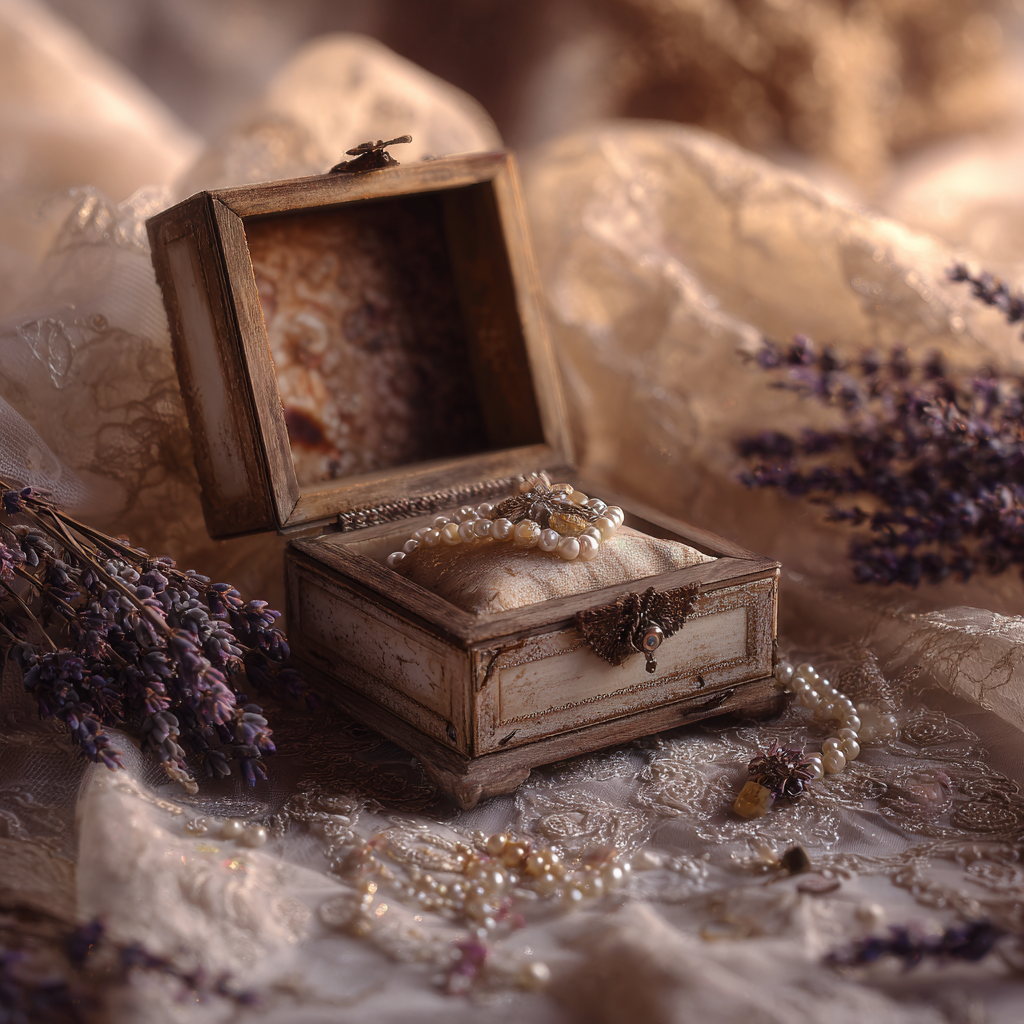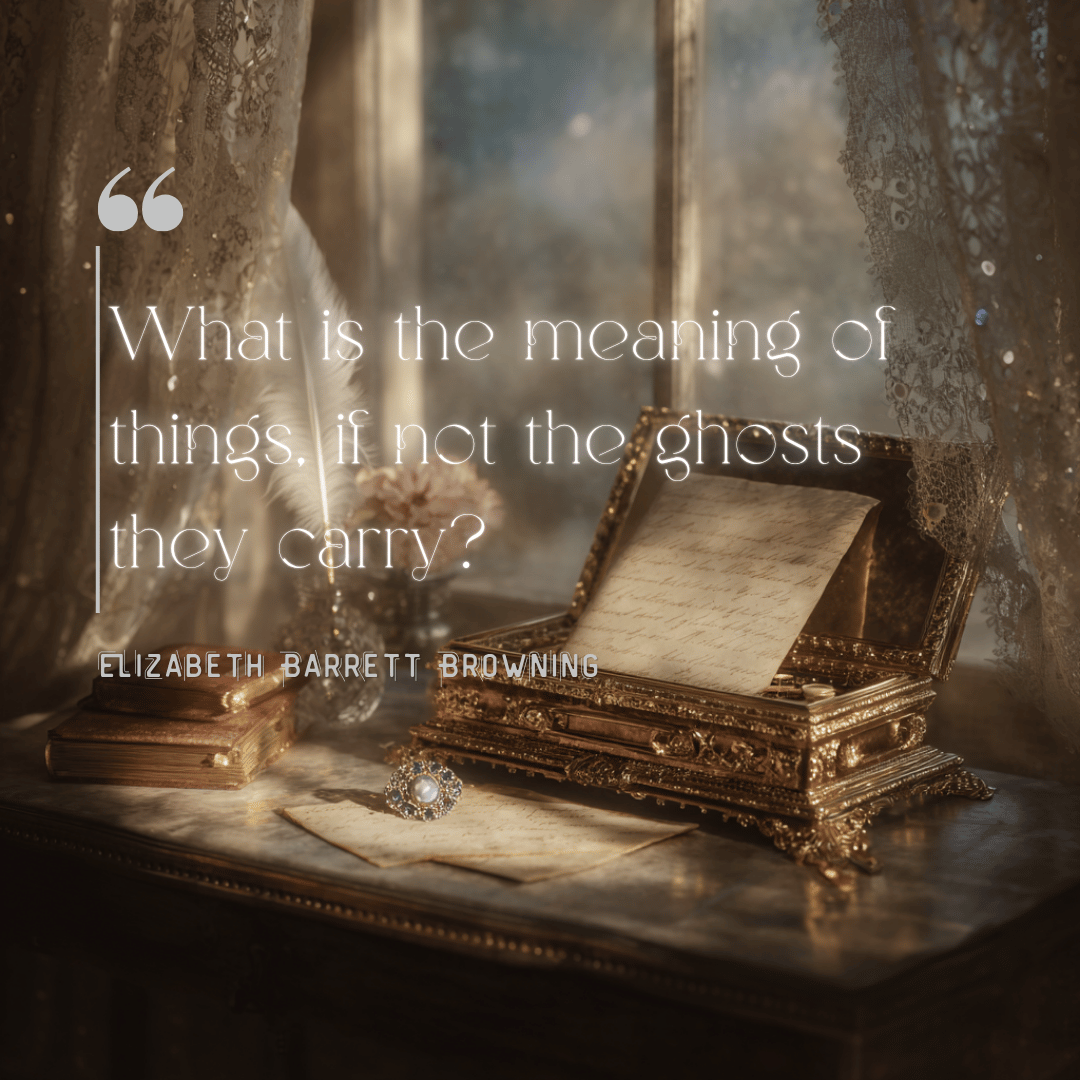
“What is the meaning of things, if not the ghosts they carry?”
– Elizabeth Barrett Browning, adapted from private letters, 1840s
In 1865, a Yorkshire bride named Emma found a silver pin beneath her window seat. By morning, her wedding bouquet had withered, and the pin lay twisted in the ribbon. What had begun as a family heirloom intended to honour the dead became something far more unsettling.
The pin was made in 1855, crafted by a Sheffield silversmith for a factory worker who had lost his wife. Silver filigree surrounded a single jet bead, that stone of perpetual mourning that adorned so many Victorian throats. When Emma, herself a young widow, discovered it wrapped in yellowed tissue, it seemed a perfect token for her second marriage. Something old, something meaningful, something that connected her to the women who came before.
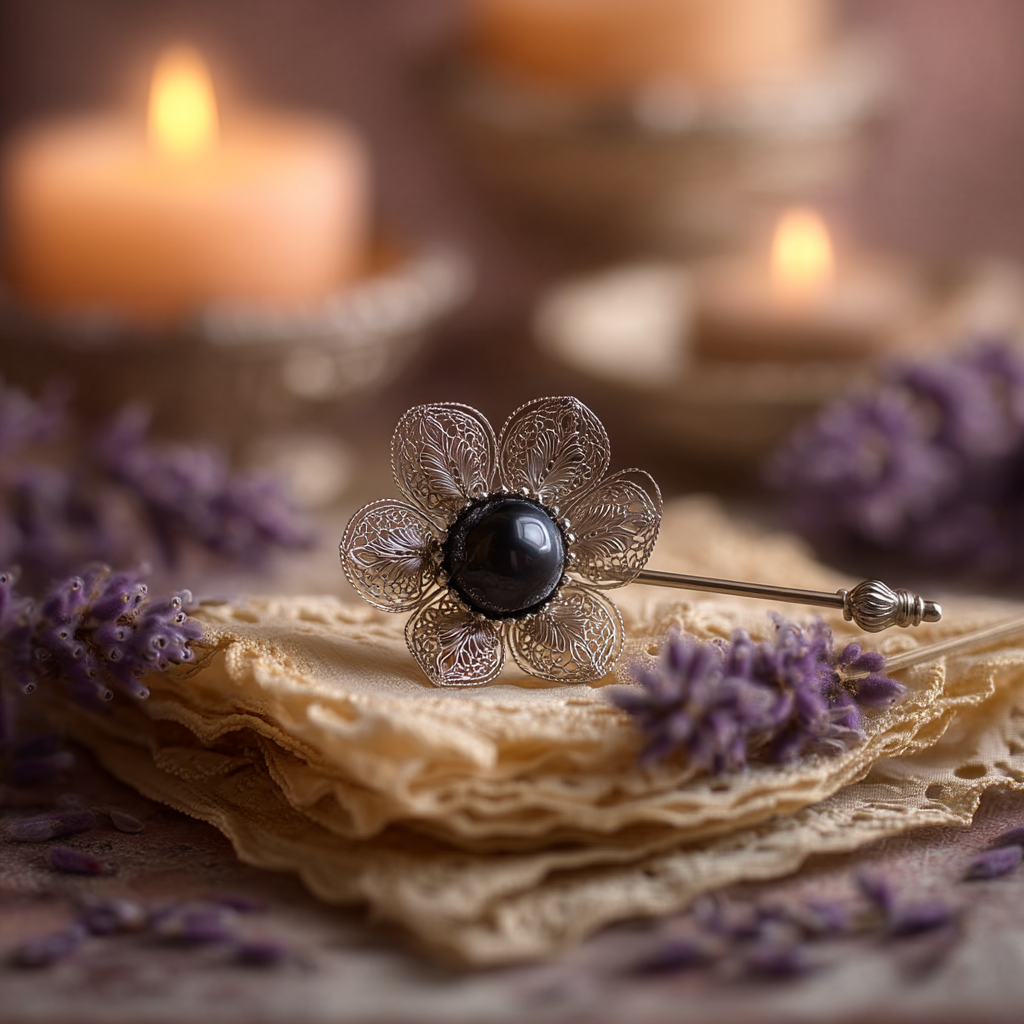
She had not considered what those women might have left behind.
The Weight of Wedding Pins
Despite their embrace of railways and medical advances, the Victorians clung to wedding rituals with remarkable tenacity. Every detail carried significance, from the sixpence tucked into a satin shoe to the carefully chosen “something borrowed, something blue.” These were not mere customs but protective ceremonies, small acts of magic woven into the most sacred of days.
Pins held particular power in this delicate choreography. They fastened layers of silk and tulle, secured veils against Yorkshire winds, and held sprigs of myrtle in trembling hands. But their symbolism ran deeper than function. In the intricate process of dressing a Victorian bride, dozens of pins were required. Helpers would arrive before dawn, their sewing boxes bristling with steel and silver, ready to transform an ordinary woman into something approaching the divine.
The 1867 Yorkshire Parish Magazine recorded a telling warning:
“Let no bride employ pins of black metal upon her wedding day, lest sorrow follow swiftly.”
This was not mere superstition but documented belief, passed down through generations of Yorkshire women who understood that marriage was a threshold, and thresholds required protection.
Emma’s dressmaker, Mrs Hale, understood such things. When Emma arrived at her Haworth workshop with the silver pin, the older woman’s face grew thoughtful. Mrs Hale had dressed brides from the mill villages for thirty years. She knew the weight of inherited jewellery, particularly pieces born from grief.
When Something Old Carries Too Much
The familiar wedding rhyme took on deeper meaning in Victorian England, where “something old” often came from family mourning collections. Widows possessed elaborate jewellery crafted from jet, hair, and silver, pieces worn during the lengthy periods of public grief that society demanded. When these items transitioned from mourning wear to bridal accessories, they carried complex emotional histories.
Emma’s pin had been commissioned during the darkest period of her father-in-law’s mourning. For two years, it had fastened black crepe to black silk, absorbed tears during funeral services, and rested against a heart heavy with loss. Victorian women believed such objects retained the emotions they witnessed. In their understanding, metal and stone could hold memory as surely as flesh and blood.
The Sheffield parish records from 1863 mention a curious incident involving a mourning brooch worn at a wedding in nearby Rotherham. The bride fainted three times during the ceremony, and guests reported an unusual chill in the church, despite the June weather. The brooch, inherited from her grandmother’s funeral attire, was quietly removed and never worn again.
Mrs Hale shared this story with Emma as they examined the silver pin by candlelight. The jet bead seemed to absorb the flame’s glow rather than reflect it, and both women noticed how the metalwork felt unusually cold, even in the warmth of the workshop.
The Language of Domestic Magic
Beyond wedding days, pins occupied an important place in Victorian folk magic. They appeared in protective rituals recorded throughout the West Riding, often combined with other sharp objects in practices that predated Christianity by centuries. The 1858 journal of a Keighley clergyman describes discovering what he termed “heathen bottles” hidden in cottage walls, filled with bent pins, iron nails, and stranger contents still.
These witch bottles, as folklore scholars now call them, were buried beneath doorsteps or sealed within hearths to trap malevolent spirits. The sharp objects inside were meant to pierce any harmful intentions sent toward the household. Some bottles were heated over fires, a practice that occasionally ended in disaster when iron vessels exploded from the pressure.
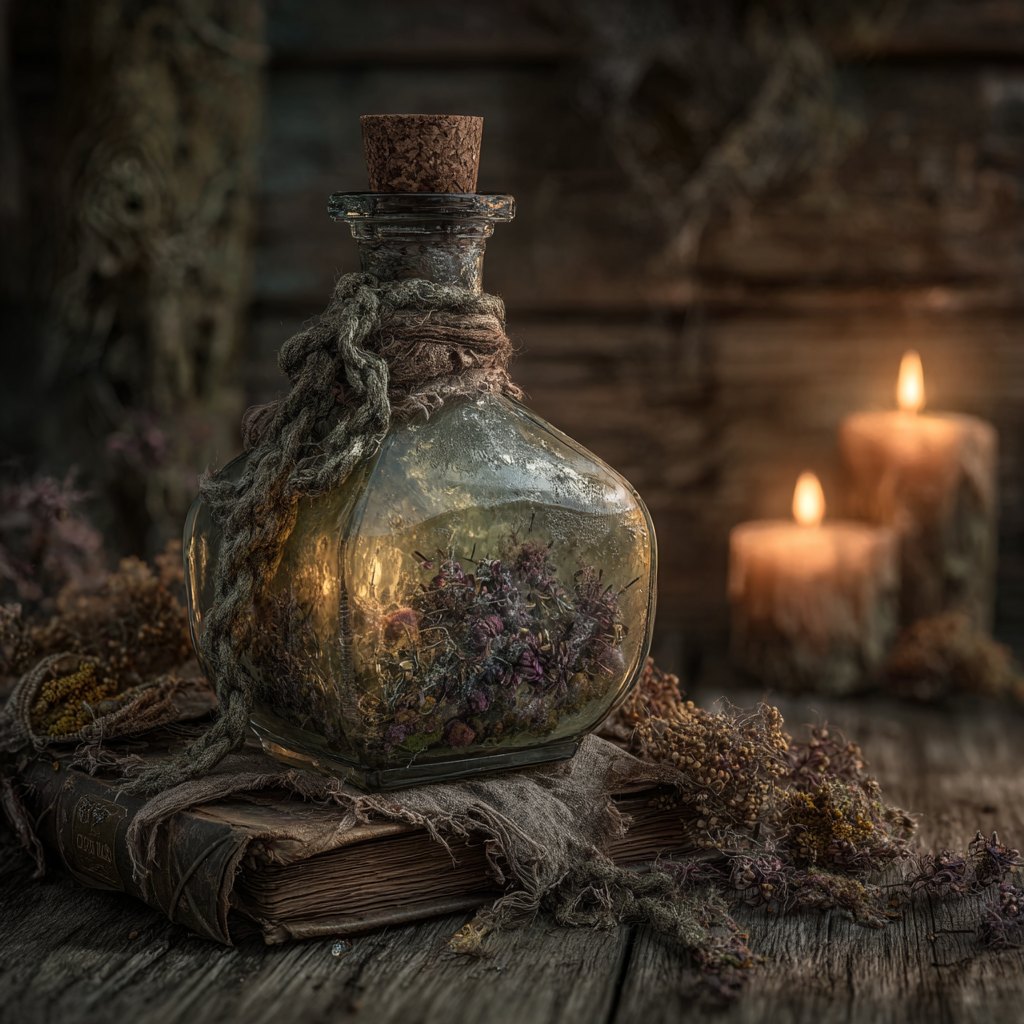
The connection between such domestic magic and wedding customs becomes clearer when we consider that marriage represented the most vulnerable moment in a woman’s life. Victorian brides were thought to be particularly susceptible to spiritual interference, hence the veil’s protective function and the careful attention paid to every accessory that touched their skin.
Emma learned this when her wedding bouquet, arranged the evening before her ceremony, was found completely withered by morning. The white roses had turned brown overnight, and the silver pin, which had been securing a ribbon around the stems, was discovered bent nearly in half. Mrs Hale took one look at the scene and led Emma directly to her cottage hearth.
A Ritual of Release
Beneath a loose hearthstone, Mrs Hale revealed a collection of objects that spoke of decades spent protecting Yorkshire brides. Small bottles filled with dark liquid, scraps of wedding fabric, and dozens of bent pins collected from ceremonies where something had gone amiss. This was her own protection ritual, developed through years of witnessing what happened when inherited grief was worn too close to the heart on wedding days.
Together, they selected the oldest bottle, one filled with pins from troubled ceremonies dating back to the 1840s. They heated it carefully over the fire, listening to the contents bubble and hiss as steam escaped through cracks in the wax seal. When the bottle finally split open, releasing its metallic contents onto the stone hearth, both women felt a distinct lightening in the room’s atmosphere.
Emma’s pin was added to the collection, its jet bead now dull and lifeless. In its place, Mrs Hale offered a simple silver button from her own wedding dress, worn thirty years earlier during a ceremony remembered for its joy rather than its sorrow.
The second bouquet, arranged on the morning of Emma’s wedding, remained fresh throughout the ceremony and for three days afterward.
Objects That Remember
The Victorian understanding of sympathetic magic, the belief that objects could affect one another through invisible connections, feels less foreign when we consider how readily we still attribute personality to inherited possessions. Modern brides often speak of feeling their grandmother’s presence through a borrowed necklace or sensing family history in an antique ring.
Perhaps the Victorians simply articulated what we still feel but rarely name: that objects absorb something of their owners’ experiences. In their world, a pin that had fastened mourning clothes would naturally carry traces of grief, just as a wedding ring would hold echoes of the vows spoken over it.
The records kept by Yorkshire parish churches between 1850 and 1870 contain numerous references to “troubled ceremonies” where family heirlooms seemed to bring more sorrow than blessing. These accounts, dismissed by later generations as superstition, may have been attempts to understand the complex emotions surrounding inheritance, loss, and new beginnings.
The Stories We Keep
Emma’s story, though drawn from fragments found in parish records and dressmakers’ journals, illustrates something that transcends Victorian Yorkshire. We continue to invest objects with meaning, to sense history in the weight of old metal, to feel the presence of those who owned our treasures before us.
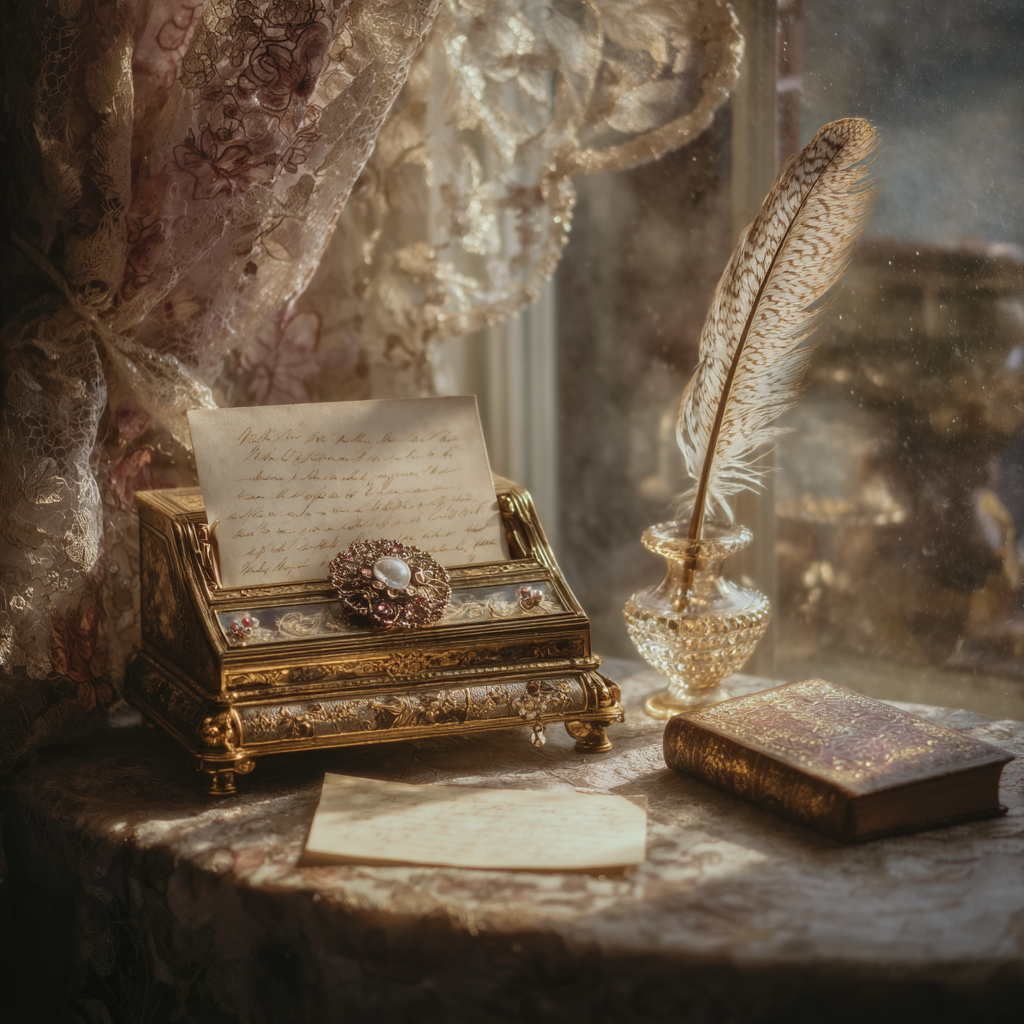
The difference lies not in our beliefs but in our willingness to acknowledge them. The Victorians created rituals around their intuitions, developing elaborate customs to manage the emotional complexity of inherited objects. We might learn something from their careful attention to the feelings that old things carry.
Walking through Yorkshire villages today, you can still find cottage hearths where loose stones hide small collections of bent pins and broken bottles. These are not museum pieces but active traditions, quietly maintained by women who understand that some objects require careful handling, and some histories need proper endings before new stories can begin.
The next time you handle a family heirloom, consider what the Victorians knew: that objects can hold more than their physical weight, and that the most meaningful possessions often carry the deepest shadows. What feelings might be sleeping in your jewellery box? What memories rest in the silver and gold passed down through generations of careful hands?
Perhaps it is simply metal and stone. Or perhaps, as Elizabeth Barrett Browning suggested, the true meaning lies in the ghosts they carry, waiting patiently to be acknowledged, honoured, or finally released.
